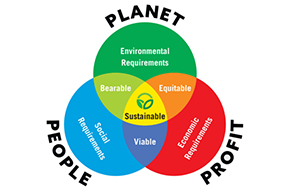Communities may be primarily aware of ADA requirements when it comes to physical improvements and standards for parking spaces, entrances/exits, restrooms and sidewalks. In addition to these physical improvements, which have minimum standards for accessibility, communities are also required to make public meetings accessible too. This might include wheelchair access to meeting rooms, accommodation for service animals, and amplification or other services for in-person public meeting events. Online meetings, when used, also can be made more accessible through closed captioning, for example. When it comes to documents, however, most local governments could benefit from improvements to make these important resources more accessible for the entire community.
Why Make Your Digital Documents Accessible?

Our communities are comprised of diverse populations which include those with varying levels of visual impairments and cognitive challenges. Those with such conditions may have limited access to documents important for community development, health and safety, and general well-being (such as master plans, development reviews, zoning ordinance nuisance ordinances and general community outreach). These documents should be written and organized in ways that make them accessible to everyone to improve communication about the spaces and character the community wants.
Here are a few reasons it’s important to make digital documents accessible:
- Supports a thriving community: Local governments create many documents with the ultimate goal of creating healthy, vibrant places to live, work, and play.
- Inclusivity: Accessibility ensures that everyone, regardless of their abilities, can access and understand the information contained in digital documents. This includes individuals with visual impairments, hearing impairments, cognitive disabilities, and motor disabilities.
- Participation: Accessible documents enable broader participation in community planning processes. When information is presented in formats that are easily understandable and accessible, more people can engage with the content and provide meaningful input. This helps to ensure that diverse voices and perspectives are considered, leading to more inclusive and representative planning outcomes.
- Ethical and moral responsibility: Ensuring accessibility is a matter of fairness and equal opportunity. It promotes social equity by removing barriers and providing individuals with disabilities the same access to information as their non-disabled peers.
- Improved user experience for everyone: Accessibility features not only benefit people with disabilities, but also enhance the user experience for everyone. For example, reducing table size (where possible) and providing headers for every row and column allows those using text readers to more easily navigate tables, as well as those reading the table on the page. Clear and well-structured content is easier to read and understand for all users, regardless of their abilities.
- Legal compliance: In the U.S., the Americans with Disabilities Act (ADA) mandates that public entities and places of public accommodation, including websites, be accessible to individuals with disabilities. Failure to comply with accessibility standards can result in legal consequences, such as lawsuits and fines.
In summary, accessible documents play a crucial role in community urban planning by promoting inclusivity, compliance with legal requirements, improved user experience, community participation, ethical responsibility, and by supporting a thriving community. By ensuring that information is accessible to all members of the community, we can create more equitable and sustainable communities.
Tools for Understanding Accessibility Issues in Documents
- In Word: Go to Review > Check Accessibility to get tips on how to improve the accessibility of your document
- In Acrobat: Go to More Tools > Accessibility > Accessibility Check to get a report and suggestions on how to improve the accessibility of the document
- How to add alt-text to documents and tips for the content can be found here

Ways to Increase Accessibility in Documents
- Use size 14 font when printing materials.
- Use sans serif fonts like Arial or Calibri.
- If using colors or including graphics, use colors that create a contrast. If using colors to convey information, try to use hatching, shading, or other means to differentiate elements.
- Add alt text to graphics.
- In general, avoid tables if possible. If you do use a table, try to keep it simple and include headers for each row and column.
- Avoid writing important information in the header or footer sections of documents.
- Add bookmarks to PDF documents over 9 pages long.
- Avoid background images and watermarks.
For more information, please contact Giffels Webster at 866.271.9663. www.giffelswebster.com



